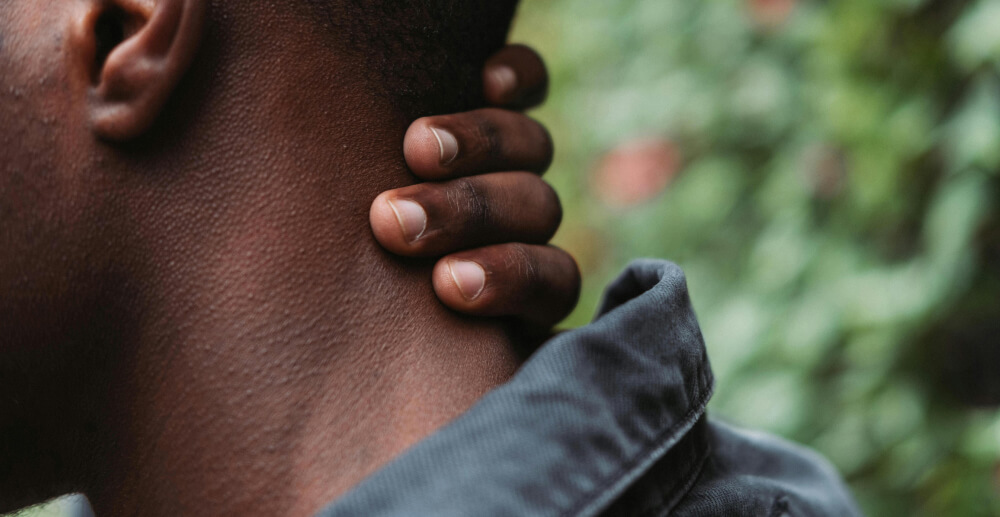Syd was struggling with alcohol and anxiety. Breathwork became an important tool for her in recovery.
I loudly gasped for air as if I had been underwater
I looked around to see if anyone had heard me. I kneeled down on the floor at my place of work … in the middle of the day. I had experienced panic and anxiety attacks before, but this was different. Nothing in particular had triggered me, my mind was not racing, and my heart rate was not elevated. So what caused it? I realized I had been breathing so shallowly that my body had rebounded, forcing my lungs to take a breath as if I were drowning.
Metaphorically speaking, I was definitely drowning. I was in rough shape.
That experience, unpleasant as it was, planted a seed, one that would unravel and start to present itself more and more as I started my journey to living an alcohol-free life. Breathwork exercises became one of my main tools in getting and staying free from alcohol and the other methods I used to escape.
Breath painted boxes in a car
I drove a lot for work at the time. I would sit in my car preparing to visit a client, mental gymnastics and negotiations going full blast in my brain. With the sun in my eyes, I was glued to my seat, feeling as if my skin was on fire.
In my desperation for a way forward, I remembered a technique called the Box Breath. Using my pointer finger I moved it slowly up, counting and breathing to the count of four. Then right for four counts, down for four counts, and left again for four breaths. For a few minutes, I would paint imaginary boxes, breathing and counting. The anxiety instantly decreased in my body, and my mind settled. I felt human again.
This easy, accessible, two-minute practice was and is one of my all-time favorites! My kids use it, too.
Breathwork is a bridge
There were always two versions of me. The one I aspired, dreamed, and yearned to be, and then the one I actually was. I longed to integrate into that aspirational version of myself. I was drawn to it like a shark to blood, swimming so hard and fast but never getting anywhere.
I found myself in recovery communities, following inspiring people on Instagram. They had these beautiful suggestions of how to get to the place where I didn’t drink again, the place where my two versions met. “Create a morning routine,” they told me, and I would cry because I just couldn’t do it. I added it to the list of what felt like a million other things I couldn’t do. I knew the things. I knew all the things I had to do. But how?
Focusing on my breath and practicing Breath Awareness created a bridge for me. Instead of getting in my own way with my thoughts, I could shift my focus to my breath. After witnessing how I was breathing, I would take one or two long, slow … and then I could do it. Breath Awareness shifts our attention from the mind into the body, making it easier to move on to the next thing.
Breathing is free, accessible, and available to most people
I’ve come to learn that many people breathe like I was on that day I gasped for breath. We hold stress in our bodies with tense shoulders and necks. (My way is clenching my hands, holding my thumbs tightly to the point of pain.) Many of my Breathwork clients have to wear mouthguards to protect their teeth from the way they grind their teeth and clench their jaws at night. Stress manifests itself as tension all over the body.
On a normal day, we may take short shallow breaths that only engage the upper portion of our lungs, not realizing we’re robbing our minds and bodies of many benefits. If we expand our breath pattern into the full capacity of our breathing space, we utilize our full lung space. When we take full, deep breaths, we communicate with our nervous system, our digestive tract, and so many other parts of our bodies. Simply extending your exhale longer than your inhale tells the nervous system to shift into relaxation mode and release the physically stored tension.
I am often asked questions about health risks around breathwork. My advice is to start slow and simple. Always check with your trusted medical practitioner. A great starting point is to just recognize your breath. Witness how you’re breathing and try to take one deeper breath a day. Not too deep, just deeper than you normally do. Then make it two per day. Then perhaps try the Box Breath technique. Find a song that sparks some joy and has a nice beat. Count and focus on your breathing for the duration of the song. Try it a few mornings while you wait for your coffee or tea.
My insides now match my outsides
I feel like I hear this a lot in recovery spaces, this saying, along with the concept of feeling like two versions of ourselves. I can happily say at five years of an alcohol-free life, I am integrated. My actions are a reflection of my values. Not every single action, but most.
I used breathwork as a bridge to get there.
Syd joined Workit Health for a Community event about breathwork. Click here to watch the video.








